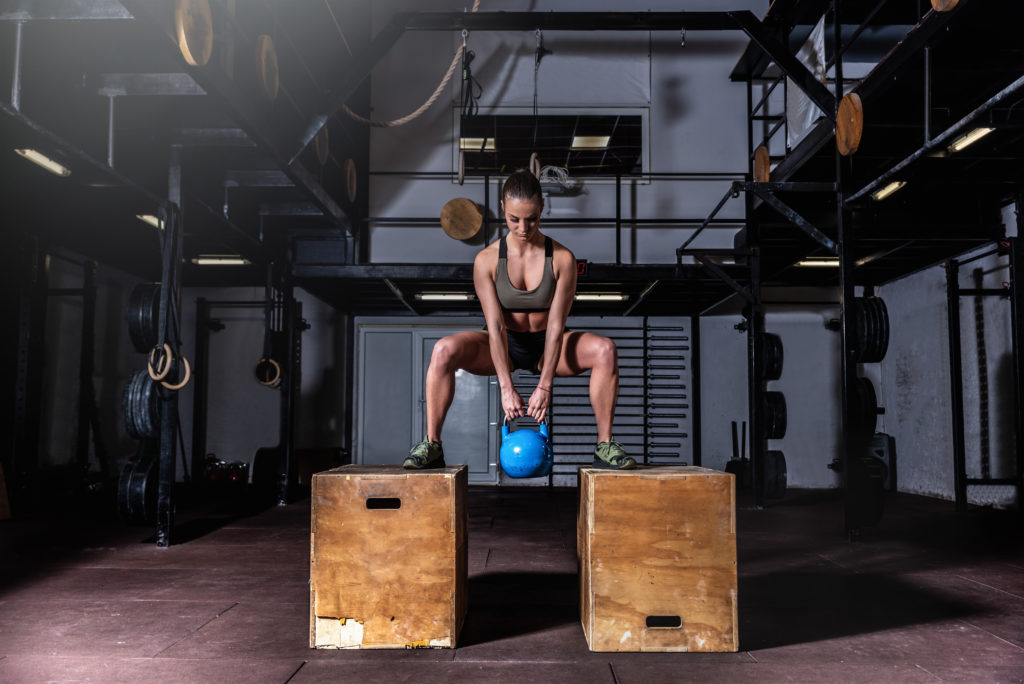Functional Movement: Prolonged sitting has been associated with cancer, heart disease, type 2 diabetes, muscular issues, and increased risk of depression. As we age, it is imperative that we move our bodies throughout the day. Movement throughout the day is more important than one intense exercise session. If you have a sedentary job, get up and walk, or stretch frequently throughout the day. Taking that time each day to move our bodies is necessary for both our mental and physical health.

Many of us are attached to the idea that we need to do intense physical exercises, like strength training at the gym, distance running, or heavy lifting.
Functional movements do not have to be an intense physical exercise in order for there to be a benefit reaped. In fact, many of us are overtraining, and this puts the body into an inflamed state and can make us feel worse. Movement is cumulative throughout the day. Every half hour throughout the day, we should get up and move our bodies.
Functional Movement: Get Upside Down!
Many yogis attest to the benefits of being inverted, or upside down. Being upside down is an amazing way to reinvigorate ourselves, get that blood flowing to the brain! It has been attributed to better circulation, increased energy, lymphatic drainage, and a host of other benefits. If you can’t do a handstand or headstand (I’m one of those who cannot quite do that yet), simply getting in downward facing dog pose, and peddling out the feet is an amazing way to get mostly inverted and get that blow flow to the brain.
Quick tips: get up every half hour and get inverted, and stretch out.
Functional Movement: What about cardio and strength training?
I’m very big on the functional movement. Functional movements involve movement which incorporates many large muscles, rather than isolating specific muscles. Functional movement utilizes the core stabilizers and all different planes of movement. In our culture, we love to isolate things. There is this concept when it comes to health that is important to remember. Our body systems are synergistic. All our muscles, joints, ligaments, work together. Western Doctors treat individual symptoms, rather than looking at the whole picture.
We love to separate and isolate our muscles when we lift weights and focus on just one or two muscle groups per session. In a sense, we are micromanaging our bodies. Movement can be exciting, fun, and can encompass the entire body. It doesn’t have to be a dreaded trip to the gym for ‘leg day.’ Many of us shy away from physical activity based solely upon years of conditioning. We believe exercise is something demanded upon us, something that is not fun, and something that we often associate with dread. We call it fitness. And exercise. And training.
‘Functional movement should translate into every context and purpose, including sports playing, gardening, running after and picking up children, and even walking through the shopping mall.’ –Georges Dagher
Let’s change this paradigm and simply call it movement. Movement in our 40’s is important because it releases growth hormones, which help to keep us young and active. Sarcopenia is an alteration in structure, biochemistry, and molecular function of muscles. Sarcopenia creates frailty, poor quality of life, and early death. We want to feel good in our middle-age. We want a quality of life over longevity.
Many factors lead to loss of strength, but the primary causes are oxidative stress, hormonal changes, reduced physical activity, insulin resistance, and nutritional deficiencies. The best way to counteract Sarcopenia as we age, it through movement. The signaling pathways in our muscles are modulated through movement. We need to move our bodies. Movement is absolutely necessary to survive and thrive.
Movement is therapeutic for the memory and brain function[1], and releases hormones[2] that help to keep us vibrant and feeling good! Although there are poor quality places that can give CrossFit a bad name, I recommend finding a facility that places an emphasis on mobility as part of the training, and the coaches are strict with correct form. Sometimes it takes trial and error in finding a quality place, but CrossFit is a great option for many people, so don’t be afraid to try.
I also realize CrossFit might not be a great fit for everyone. I typically don’t go to my CrossFit more than a few times per week (usually three to four), as I struggle with autoimmune issues. Any over-stress to the body, even good stress, can cause an autoimmune flare-up for me. My goal is to keep my body as uninflamed as possible. This requires I let go of my ego some, and take full rest days, or days with just walking my dog.
On days I do not go to CrossFit, I incorporate yoga, stretching, walking my dog, biking, wrestling with my boys, and hiking. If you have a partner, even sex is considered movement! These are all beneficial movements that utilize the body.
With this said, I believe it is very important to lift heavy things, at least two to three times/week.
We do lose muscle tissue as we get older, and it’s important to maintain our strength. If you do not have access or funds for lifting weights, you can still resistance train, utilizing your own body. A recent study[3] actually showed that high repetition, low load exercise (such as push-ups, lunges, wall squats, sit-ups, etc) produced significantly greater increases in growth hormone.
Second, there were long-term extra gains in the muscle cross-sectional areas and muscle thickness in the group that did the light load, high rep training. What this means for us is that you don’t even need a gym. Just a section of the floor and maybe a pull-up bar. There are countless videos out there with various routines you can follow.
Functional Movement: Get Squatting!
There is one movement that I think everyone should work on daily, and that is the deep squat! Deep squatting helps to align everything. Squatting helps to align the shoulders, spine, knees, hips, and ankles and isn’t just for CrossFitters. Squatting helps with mobility, stability, strength, balance, and coordination, at every age and every level.
The bodyweight deep squat.
The ability to descend into the deep squat requires a healthy mix of joint mobility, stability, strength, and coordination. Priming the body for the deep squat, and utilizing it as much as possible, creates an opportunity for improved function and overall mobility. In my opinion, the deep squat can serve as a daily movement ritual or test that gives you information about your body.
Whether you’re a powerlifter, weightlifter, CrossFitter, weekend warrior, or a parent, the ability to squat directly impacts your life, lifestyle, social interaction, and health. Picking up a barbell, baby, or a bag of groceries off the floor is all founded on that hinge, which is engraved in the deep squat. –Georges Dagher
Practice getting deeper and deeper into the squat each time, keeping your weight in your heels, abdomen tight, and your chest up. You can stick your arms out in front of you for balance. Hold for five to 10 seconds and repeat. Work your way up to 20-second holds and three sets of five throughout the day. You can also challenge yourself and add dumbbells, or work on pistols, squatting with one leg extended forward.
Getting down into a deep squat with a little bit of weight out front is a great way to establish what your mobility and stability are like before you proceed with heavier squat variations or barbell squats.
References:
[1] Diederich, K. et al. (2017). “Effects of Different Exercise Strategies and Intensities on Memory Performance and Neurogenesis” Front. Behav. Neurosci., https://doi.org/10.3389/fnbeh.2017.00047 [2] Ignacio DL, et al. (2015) “Thyroid Hormone and Estrogen Regulate Exercise-Induced Growth Hormone Release.” PLoS ONE 10(4): e0122556. https://doi.org/10.1371/journal.pone.0122556 [3] Fink, et al. (2016). “Effects of rest intervals and training loads on metabolic stress and muscle hypertrophy” Clinical Physiology and Functional Imagining, Vol. 38, Issue 2. pp 261-268. https://doi.org/10.1111/cpf.12409




Leave a Reply
Your email is safe with us.